How Can I Choose A Real Tahitian Pearl?

Since the discovery of precious gemstones, Tahitian pearls have been exotic, offering a variety of hues and growing with style.
Due to the extreme rarity and value, people produce fake ones using machines.
Now, fake Tahitian pearls made of plastic or glass beads that are hard to detect.
If you’re picking pearl jewelry, it is wise to check the authenticity of the pearls. That is why we are here with some tips to spot fake ones.
Still confused about Tahitian Pearl? Go through our guide to check your pearl and pick the real and lustrous one for your love.
Factors To Check Real Tahitian Pearls
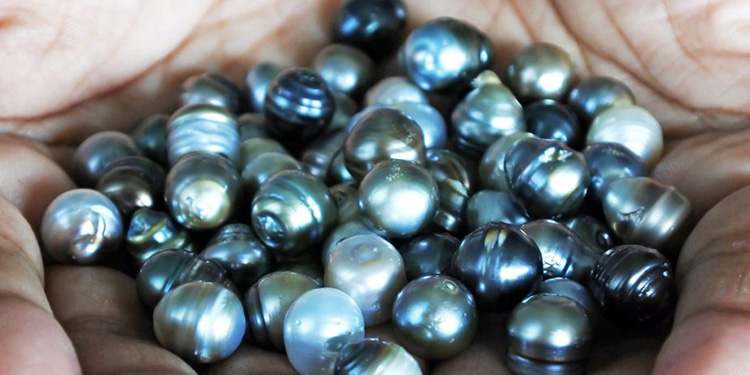
Before picking a piece of jewelry, observe the pearl's luster, color, weight, and sound to choose the real one. Let's have a look at these factors in detail.
Luster of Pearls
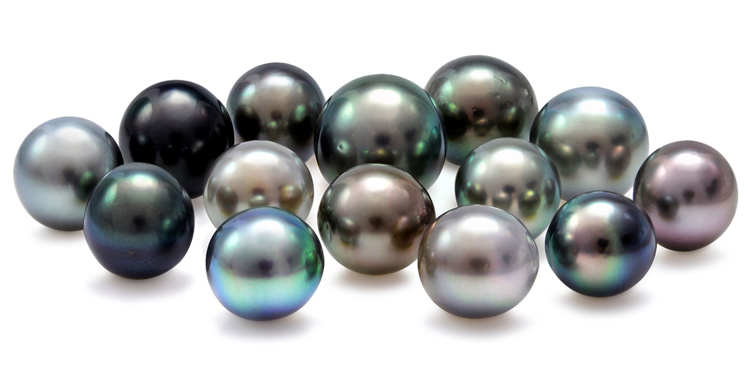
When it comes to the luster of Tahitian pearls, deep and thick layers of nacre give a radiant glow with many overtones.
Most pearl enthusiasts only think about the pearl's perfection in color or shape, but nature leaves the fingerprint on the gemstones.
According to Cmwpearls, you can notice the imperfections on the pearl's surface if you watch closely.
On the other hand, synthetic pearls are visually perfect with no variation. So, check the pearls closely to understand the surface reflection and intensity of shine.
Color and Hues
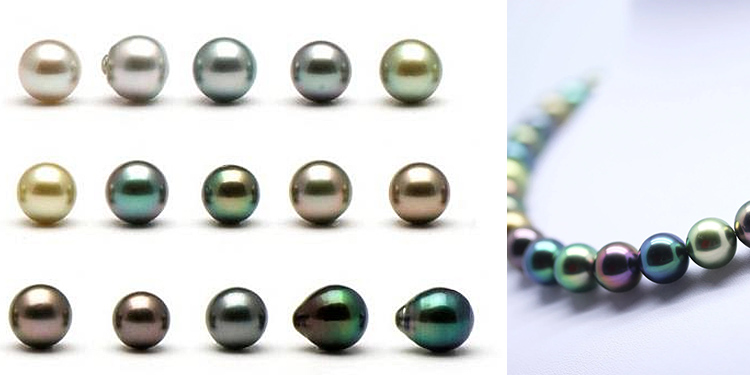
Due to the thickness of the nacre, Tahitian pearls offer various colors like silver white, iridescent peacock, charcoal gray, dark green, pale dove gray, or jet black.
Even with the diversity in colors, the rarest color for jewelry is dark green or iridescent peacock.
Besides, the translucent body colors give green, cherry, rose, blue, and bronze overtones.
Hence, check out the undertones and overtones to identify real ones, as Tahitian is the only natural black pearl.
Size Ranges
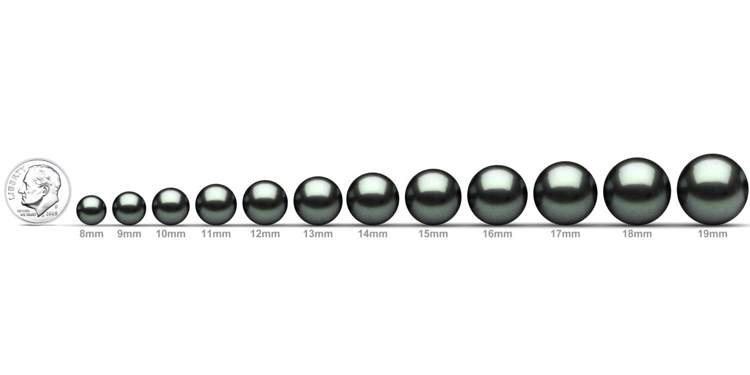
Tahitian pearls range from 8 mm to 18mm, whereas few can reach a superb 21mm.
But the most famous pearls on the market are 12 to 13mm, ideal for making necklaces, earrings, and pendants.
Hence, watch out for the available size range to pick the real ones.
Feel The Weight
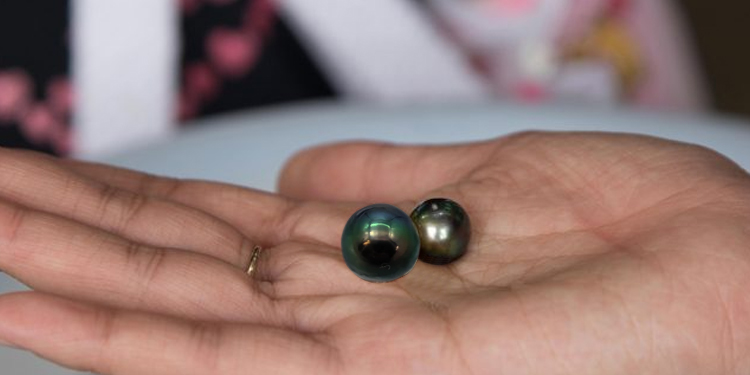
Before picking the Tahitian pearl, gently toss them up and down in hand to feel the weight.
Because of the dense construction, these pearls are much heavier than fake ones, especially plastic beads
Pukka Perri states fake Tahitian pearls are made of plastic and coated with glass to meet the shine.
Still, these pearls can’t meet the weight of real ones, and the glass layer breaks once they have hard contact.
Pitched Noise
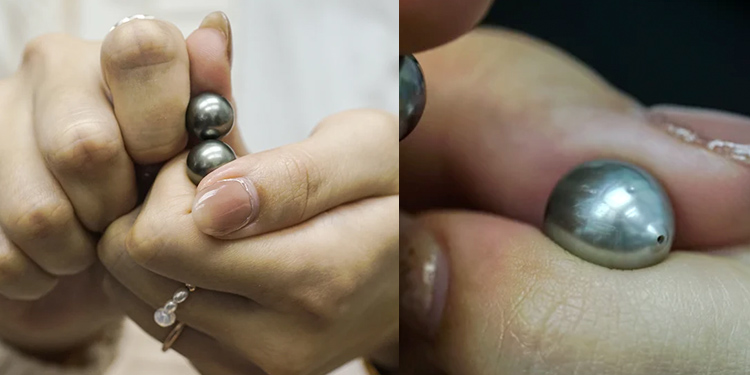
While dealing with Tahitian pearls, hear the knocking noise carefully to pick the real one.
Genuine pearl necklaces can create a soft and warmer sound on shaking. But knocking two real pearls produces a metallic and thin sound.
If you're knocking two imitation pearls together, they can create a light and low-pitched noise.
It happens as the fake pearls are made of plastic or beads and coated with glass.
That is why you can simply differentiate natural pearls by sound from fake ones.
Drill Holes
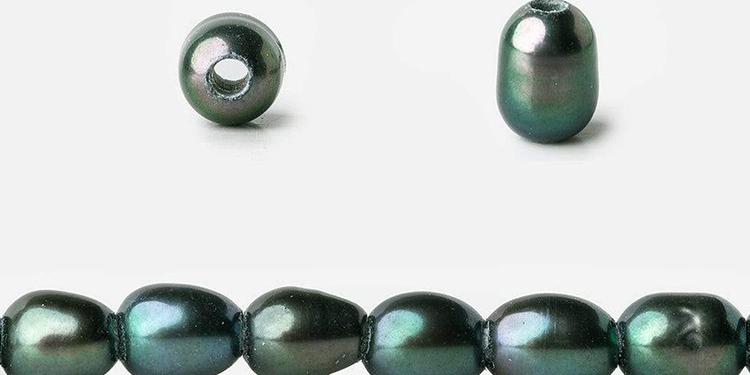
Finally, check the drill holes of the pearls to find their authenticity.
In short, genuine Tahitian pearls have crisp, clean drill holes with a rough surface.
But it won’t have any buckling of the nacre as real pearls offer concentric layers.
On the contrary, fake pearls use a pearlescent outer coating that starts peeling away while drilling.
As a result, the drill holes can expose the plastic or glass beads of the fake ones.
Is Tooth Test Enough For Tahitian Pearls?

No, a tooth test isn’t enough to test the Tahitian pearls.
Rubbing the pearls with the tooth edge can give a rough, sandy, or gritty feel.
But few fake pearls come with a special coating that can feel sandy or gritty while rubbing with teeth.
Hence, the test won’t give a precise result to differentiate real ones.
Further, a tooth test isn't practical and hygienic in a few aspects.
Even shopkeepers don’t allow you to bite or rub the precious gemstones when buying pearl jewelry.
Can I Check The Pearl's Authenticity By Rubbing Or Knocking?
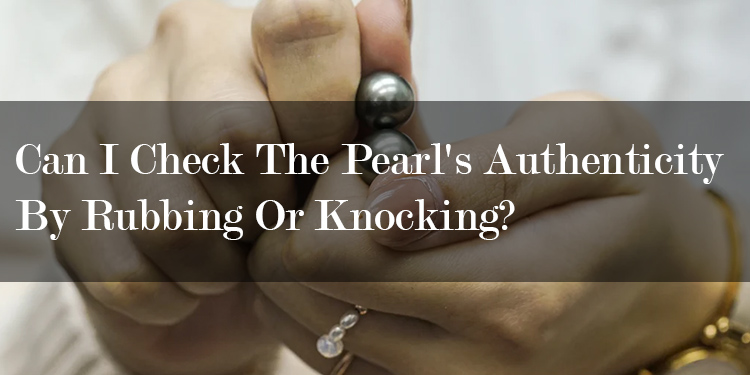
Yes, it is possible to check the authenticity of pearls by rubbing.
If you rub two Tahitian pearls together, it creates pearl powder and feels a little gritty.
As per Pearl Lang, you can scrub the pearls with a sharp object to check the powdery effect.
However, fake ones can’t make such powder and start to become pale while rubbing together or using any sharp object.
Moreover, if you knock two genuine pearls, they can produce a metallic and thin sound.
On the contrary, if you knock two imitation pearls, they can create a light and low-pitched noise.
So, listen carefully to the sound to pick the genuine Tahitian pearls.
Warp Up
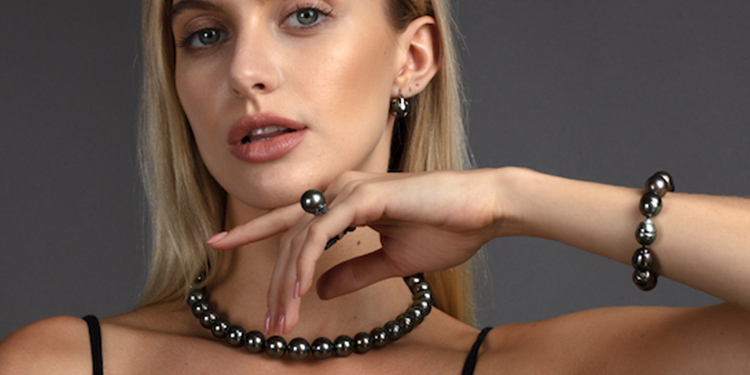
Tahitian pearl's luster, color, weight, and noise make them unique.
If you observe the shine, color, and weight closely, you can find a difference that helps to differentiate from fake ones.
On top of that, always pick the pearl from reputable jewelers or specialists to avoid fake ones.
At White Victoria's, we have exotic Tahitian pearls, a real and perfect piece for your loved one.


Leave a Comment